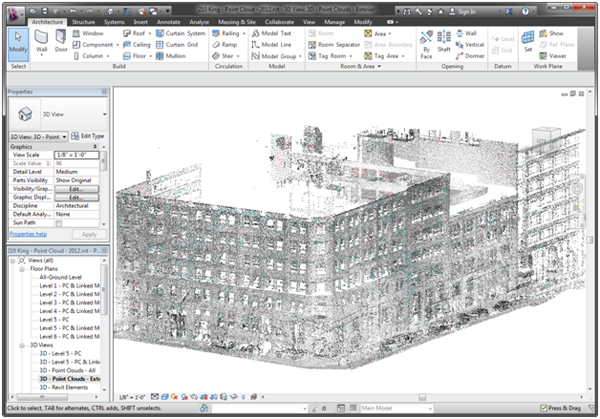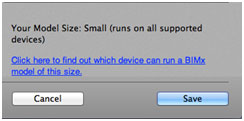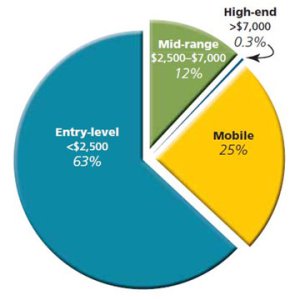Read More
Topics:
Workstations,
Autodesk,
RAM,
Hardware,
Hard Drive,
AutoCAD,
Processors,
Operating Systems,
RAID,
Upgrade,
Video Cards,
Operating System,
Windows,
CAD
Here at CADspeed, we get a lot of questions about buying new hardware for CAD applications. While the answer to, "What CAD hardware should I buy?" varies widely based on the person asking the question, it always starts in the same place: with the requirements of the CAD software you plan to use.
Read More
Topics:
Workstations,
Autodesk,
RAM,
Hard Drive,
AutoCAD,
Processors,
Revit,
GPU,
Inventor,
Graphics Cards,
Benchmark,
Mobile Workstations,
Video Cards
The most compelling reason to install multiple GPUs is to drive multiple high-resolution displays. The secret's out that "multi-mon" is the single best way to improve your productivity. Anyone who's gone to two displays (or three — or more!) will tell you they could never go back to one. And more graphics cards can display more pixels across more monitors.
Read More
Topics:
Workstations,
Hardware,
Displays,
Graphics Card,
GPU,
Graphics Cards,
Eyefinity,
AMD,
Video Cards,
Display,
CAD
Where do you begin your quest for the right workstation? This particular hardware search should start with your software.
Read More
Topics:
Workstations,
Autodesk,
RAM,
Hardware,
Graphics Card,
Hard Drive,
Processors,
GPU,
Memory,
Graphics Cards,
AMD,
Connectivity,
Video Cards,
Intel,
CAD
AMD launched the AMD FirePro A300 Series Accelerated Processing Unit (APU) for entry-level and mainstream desktop workstations. Featuring AMD Eyefinity multi-display technology, the AMD FirePro A300 Series APUs are designed for CAD and media and entertainment (M&E) workflows.
Read More
Topics:
Workstations,
Hardware,
Displays,
Graphics Card,
Processors,
GPU,
Graphics Cards,
Eyefinity,
AMD,
Video Cards,
CAD
Reality capture is a boom business for the building industry. With roughly 5 million existing commercial buildings in the United States alone, it’s easy to understand why. Laser-scanner-based reality capture is the dominant methodology used today to accurately capture the 3D state of an existing building. However, the typical laser-scan-based point cloud is in the hundreds of millions of 3D points, sometimes even going into the billions of points. With this additional data overhead on top of an already dense Building Information Model, it’s important to optimize your workstation hardware to deliver a productive user experience.
Read More
Topics:
Workstations,
Autodesk,
RAM,
Hardware,
Graphics Card,
Hard Drive,
Processors,
Revit,
SSD Drive,
GPU,
Memory,
Graphics Cards,
Connectivity,
Backup System,
Video Cards,
CAD
Spring has arrived, and the annual release of new CAD hardware is as dazzling as the blossoms on the trees outside. This season marks new beginnings, and the sense of renewal makes the CADspeed editors feel like digging into the latest releases and watching our hard work grow into something new and spectacular.
Read More
Topics:
Dell Business Workstation,
Workstations,
RAM,
Hardware,
Graphics Card,
Hard Drive,
AutoCAD,
Processors,
GPU,
Memory,
Graphics Cards,
AMD,
Video Cards,
Operating System,
Dell Workstations,
Windows,
CAD
Autodesk has released the platform and system requirements for AutoCAD 2013, which was launched on March 27, 2012. You can review the system requirements on the Autodesk website.
Read More
Topics:
Workstations,
Autodesk,
RAM,
Hardware,
Graphics Card,
Hard Drive,
32-Bit,
AutoCAD,
Processors,
Operating Systems,
GPU,
Memory,
Graphics Cards,
Upgrade,
Video Cards,
Operating System,
64-Bit,
Windows
BIMx is GRAPHISOFT’s solution to explore, present, communicate and share design. BIMx enables architects and their clients to walk through professionally rendered 3D models with an easy-to-use navigation interface.
Read More
Topics:
ArchiCAD,
Hardware,
Graphics Card,
Building Information Modeling,
Graphics Cards,
Mobile Workstations,
Video Cards
This series focuses on helping our readers understand what CAD workstations cost and how much they are going to have to spend to find a machine that meets their CAD production needs. The first part focused on entry-level systems. This post will discuss mid-range ($2,500 to $7,000) and high-end (more than $7,000) systems.
Mid-Range and High-End
Read More
Topics:
Workstations,
RAM,
Hardware,
Graphics Card,
Hard Drive,
Processors,
Memory,
Graphics Cards,
Video Cards,
Display,
CAD














